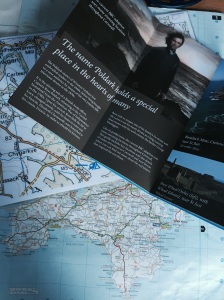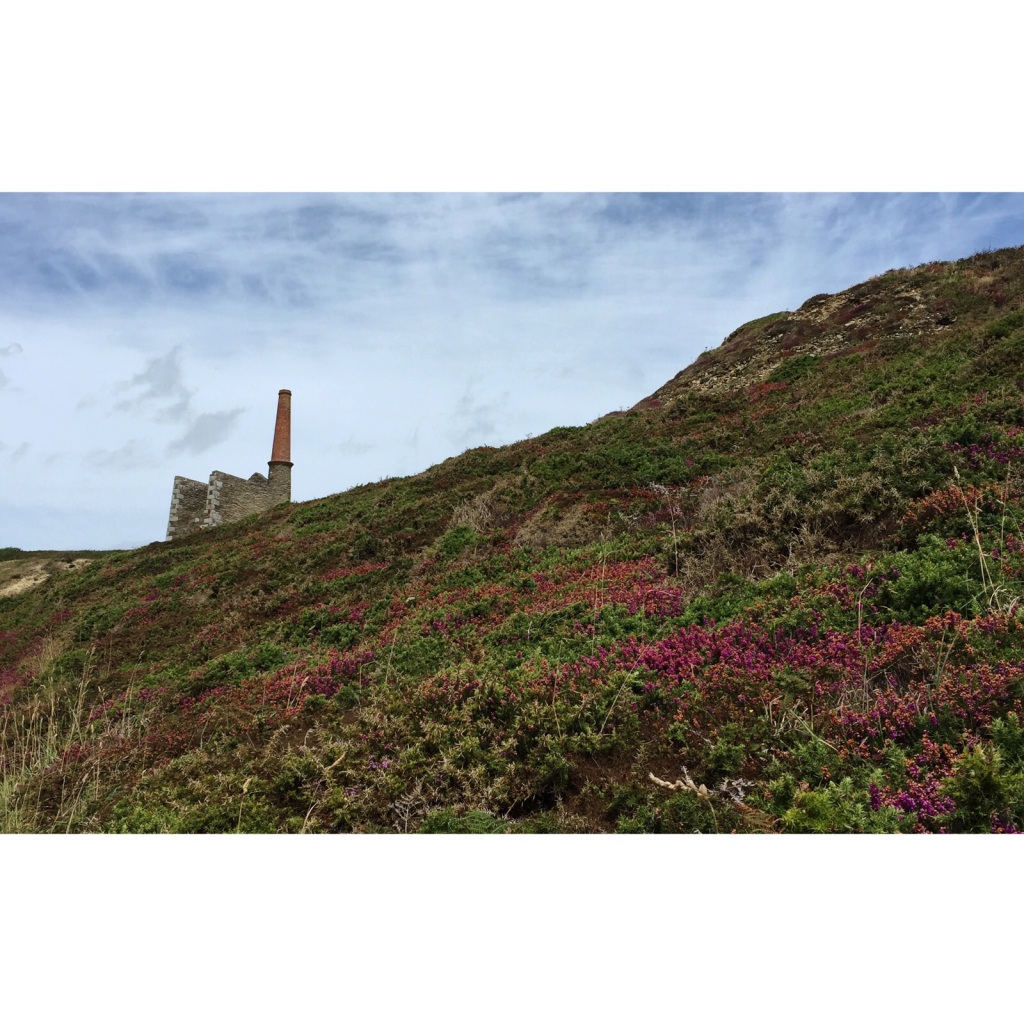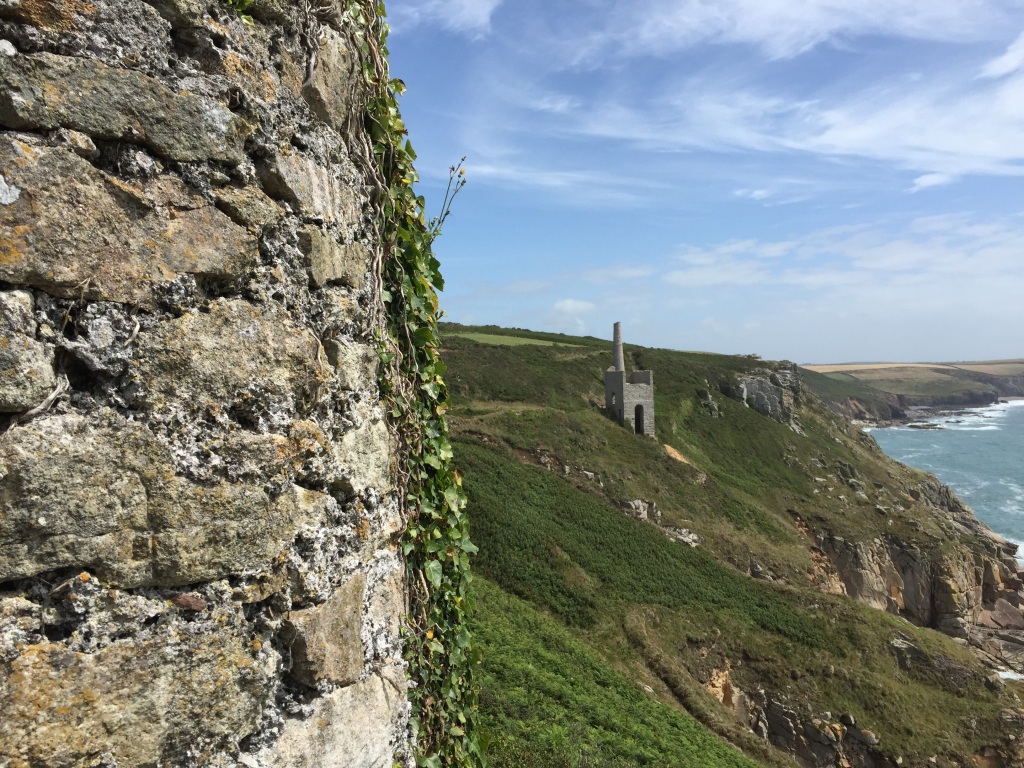For all the summer crowds, we were so surprised to have what seemed like the place to ourselves, if the killer seagulls weren’t going to peck us to death first.
I dug out the shoe-box of yellowing holiday snaps to remind myself of where we had been and what we had done on our last Cornish adventure: some ruins, lots of rain, unfashionable footwear and an awful B&B with swirly carpets that have not tempted us back in over 20 years.
The roads have improved with scenery just as invigorating, but traffic is worse and still the pubs insist we enjoy our fish ‘n chips accompanied by the local duo who warble through our main course with their lyrics lost on a wind howling straight off the Atlantic.
The overdue “Welcome to Cornwall” sign on the car-pleasing A30 was a relief to finally see and my son described the unfolding scenery of dry-stone walls and sea as “just like Poldark, only with road signs”. Moody, curvy, unshaven, courageous….liable to get one into trouble?

Cornwall has been a holiday staple since Victorian times, but this year’s summer stampede want to soak up film locations and historic sites to experience exactly where this bodice-ripping 18th century drama unfolded. If this Poldark mini-serious phenomena has escaped you, I can only think you must be living under a rock or living in a far-off land, as this country came to a standstill when Aidan Turner stripped off and picked up a scythe and got busy in a Cornish meadow. This is not, I hastily add, why we are here!
The Lizard Peninsula, where we were staying is the most southerly point in the UK, but is sadly not named after a lizard or mythical dragon, in fact it’s hard to pin down exactly what it is named after. Does it matter? Not to me as unexplained names or weird stuff lends more mystique to this wild and unspoilt landscape, designated as an Area of Outstanding Natural Beauty (AONB) that is largely under the management of the National Trust. That doesn’t mean it’s a museum piece, far from it as the landscape is dotted with much-maligned wind turbines and impressive array of communications dishes at the Goonhilly Satellite Earth station. How cool is that name? It took me five days to recognise why it all seemed so familiar to me: the light and its affect on the colours making for lush greens, deep blue sky, vivid flowers, sparking streams, the sweet smell of the pine forest on a hot day and corgi-sized muddy puddles collecting rainwater in the ruts. So far, so southern hemisphere.

You just have to look at a map to marvel at so much coastline, the coves, the wrecks (and wreckers), the heritage, literature, the surfing, the menace of crumbling cliffs and high tides. The guidebook says “that this surprisingly large area tends to attract visitors who want to get away from it all…with scenery that inspires many to write (who hasn’t read Rebecca?), paint, take photographs or just dream of another life”. Indeed.

Whilst the boys where sampling Cornish sea temperatures without wetsuits, I ventured off to explore the dramatic ruined engine houses and shafts that, from afar, seem to hang off the very edge of the cliffs. Trewavas and Wheal Prosper mines are all that is left of a once thriving 19th century undersea copper mine, just one of many sites scattered across Cornwall. (Wheal is a Cornish word that means a place of work). Long closed, they don’t fail to awe and impress with what they represent in terms of human endeavour and the ongoing battle with the elements to secure the valuable copper.
“Looking after the garden and animals and going fishing were spare time occupations. Considering the length of the miner’s working day and the arduous nature of the work, we can only wonder at their stamina. There were 3 eight-hour daily shifts (“cores”) in the mines from 0600, 1400 and 2200 hrs. Many men walked up to 5 miles to the mine from their homes and, after climbing down hundreds of yards of vertical ladders, walked a further mile or two to actually began work. After 8 hours of backbreaking work in hot, dangerous, cramped and frequently wet conditions, they had to do it all again in reverse to get home.” Author unknown, but more can be read here:

For all the summer crowds, we were so surprised to have what seemed like the place to ourselves; clifftop walks, beaches, hamlets and isolated parish churches tucked away in tucked away corners of hay fields with remarkable cemeteries with chilling reminders that the sea is never far away from these communities, past and present.
The surrounding woodland, quiet too, save for the birds, that reminded us of Knysna with its sub-tropical vegetation and miles of trails and lovely rivers and streams. Minus the elephants of course!

When browsing for holiday homes we read the reviews and will almost always book the cottage where previous occupants have complained about how difficult it is to get to, or how remote it is, or god-forbid, not near the shops! And the very nice company that has a monopoly of lovely holiday cottages in the South West doesn’t disappoint. You are buying into more than just a location though, it’s all bundled up into a lifestyle break. Been on one of those? I can ignore the woven baskets, stressed furniture and vintage, especially if there is a fire pit, BBQ facilities, a long bumpy track preferably through rivers that leads to peace and quiet.
Up the road from our tucked away cottage, is the Kernowsashimi fishmonger, who don’t sell sashimi, nor are they really open to the public however, with some name-dropping, the strip plastic curtain opened to reveal a team busy with prepping red mullet, monkfish and plenty of mackerel, some caught by our host that very day. No excuse then to not embrace the lifestyle break and abandon the BBQ for one night and god-forbid try out the Aga.
To use a travel cliche, this county is stuffed full of surprises and as a famous actor once said: “I’ll be back.” We certainly will.
If you are unable to travel to Cornwall, but fancy your chances in a meadow, try the Chilterns AONB website for scything courses.
For much more insight into the mining industry and lives of the minors
For information on the Cornish Mining World Heritage Site
For more information on the Lizard Peninsula:


One thought on “Cornwall really does what it says on the tin”